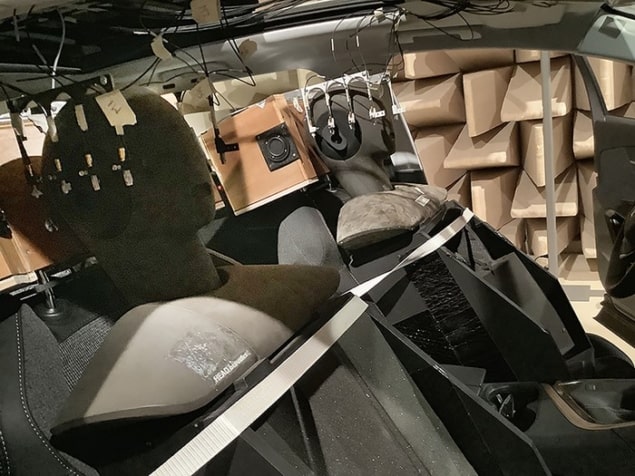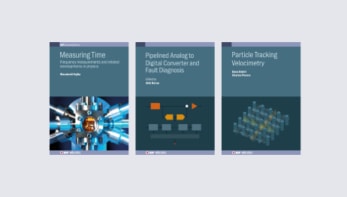
Multiple occupants of a car cabin could soon listen to different audio programmes without the need for headphones, thanks to an acoustic algorithm developed by researchers at the carmaker Stellantis and France’s Le Mans University. Lucas Vindrola colleagues designed their system to smartly adapt to changing seat positions, allowing two listeners sitting next to each other to hear entirely different sounds, while maintaining audio quality.
Personalized sound zones (PSZs) have been the subject of research for over 20 years. They allow multiple listeners sharing the same space to hear different sounds, without the need for headphones or insulating panels. The technology works by first filtering input audio signals using a specialized algorithm, then playing them simultaneously through strategically-placed arrays of loudspeakers.
This filtering generates specially tuned acoustic paths called transfer functions, which create specific patterns of constructive and destructive interference. Contained within these patterns are “bright” zones personalized to each listener, where their desired audio programme can be clearly heard; surrounded by “dark” zones, where the intensity of that particular signal is greatly reduced.
Changing acoustic environment
PSZs are of great interest to the auto industry, with the aim of allowing each passenger in a car cabin to listen to different audio programmes. However, this has proven extremely challenging because factors such as seating positions, car temperature, and passenger numbers can vary widely between journeys. Within this constantly changing acoustic environment, it can be incredibly difficult for algorithms to adapt transfer functions accordingly – potentially blurring the boundaries of each passenger’s PSZ.
To address this problem, Vindrola’s team created a new algorithm, capable of adapting a car cabin’s PSZ system when seating positions are changed. Using an array of microphones, their system first monitors the characteristics of the sound emitted by an array of headrest-mounted loudspeakers in real time. From these data, the algorithm adapts the system’s filters whenever seating positions change; adjusting the position of each passenger’s PSZ accordingly.

Meringue-like material offers lightweight soundproofing for aircraft engines
In their experiments, the team evaluated their algorithm’s performance in a system of two front car seats. The acoustic frequencies they tested were between 100–1000 Hz, which range from bass notes to human speech. Their study focused on several key aspects of improving PSZ technology, including the quality of separation between different zones, the sensitivity of the system to external noise; and the possibility of reducing the number of microphones used to monitor the sound.
Even when one seat was moved forwards by 15 cm, while the other stayed fixed, the algorithm could reliably maintain a 30 dB difference between their two PSZs. This is similar to the difference between whispering, and normal conversation. In the future, the team hopes to extend their algorithm to accommodate frequencies as high as 10 kHz; and may adapt its capabilities to operating in other highly variable acoustic environments, including homes and museums.
The research is described in The Journal of the Acoustical Society of America.



